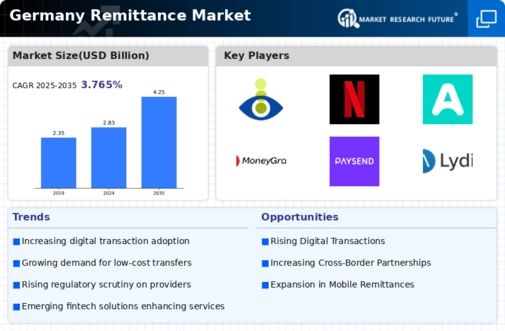The Germany Remittance Market is characterized by a dynamic landscape shaped by various players offering a range of services tailored to the diverse needs of consumers and businesses. This market has seen significant transformation due to technological advancements, regulatory changes, and evolving consumer preferences. Competition in this arena is fierce, with established banks, fintech startups, and other financial service providers vying for market share. Key factors influencing competitive dynamics include transaction costs, speed of service, user experience, and the integration of innovative technologies.
As globalization continues to expand, remittance services are increasingly becoming attractive for those seeking efficient cross-border payment solutions, further intensifying competition among service providers in Germany.Deutsche Bank, as a prominent player in the Germany Remittance Market, brings a wealth of experience, extensive resources, and a solid foundation of customer trust. With a strong network of branches throughout Germany, it offers various remittance services that cater to both individuals and businesses, leveraging its established banking infrastructure. The strength of Deutsche Bank lies in its capacity to provide secure and timely transactions while offering competitive exchange rates.
The bank's expertise in handling complex financial solutions related to international transfers positions it favorably in the evolving remittance landscape. Furthermore, its focus on customer service and compliance with regulatory standards enhances its reputation as a reliable provider within the remittance space.In the context of the Germany Remittance Market, Revolut has emerged as a significant disruptor, leveraging technology to streamline and redefine the remittance process. Known for its user-friendly app, Revolut enables users to send money internationally at competitive rates, often with lower fees compared to traditional banks.
The company's strength lies in its ability to offer real-time currency exchange and instant transfers, appealing to tech-savvy consumers who prioritize convenience and efficiency. Revolut's presence in Germany is marked by a growing customer base, driven by its innovative features, such as budgeting tools and the ability to hold multiple currencies within a single account. With continuous enhancements to its product offerings, Revolut positions itself as a formidable competitor in the remittance market, aiming to capture a sizable share through partnerships, potential mergers, or strategic expansions that align with its growth trajectory in this region.





















